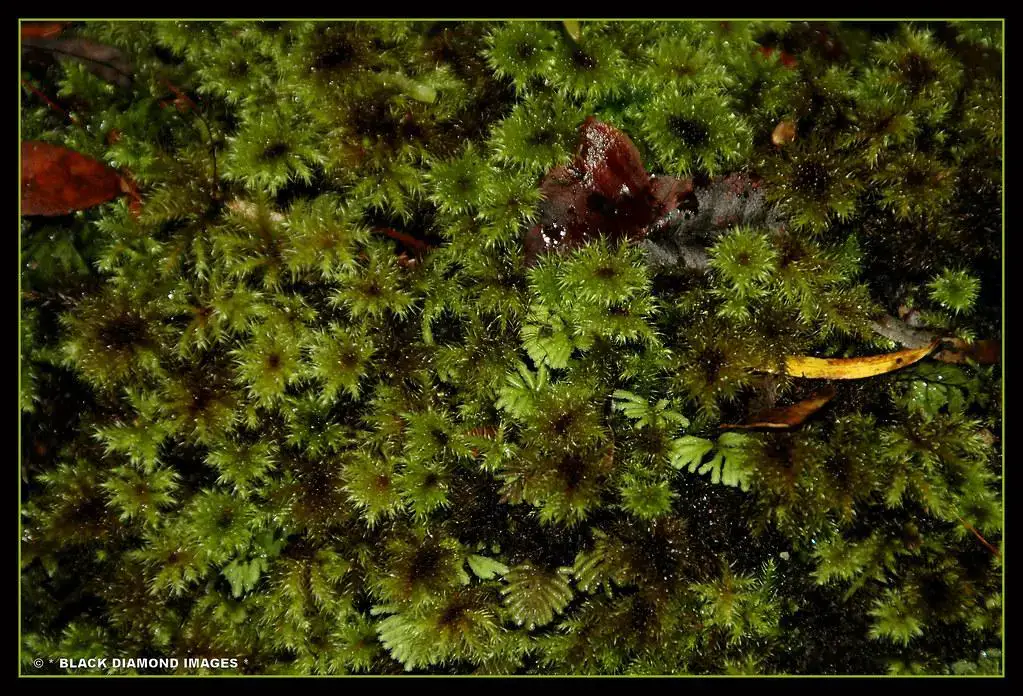
True_Moss_Hypnodendron_menziesii.JPG from: https://www.citscihub.nz/Phil_Bendle_Collection:Hypnodendron_(Genus)
Exploring the Fascinating World of Hypnodendron Moss
Introduction
Mosses are some of the most ancient and resilient plants on Earth, with over 12,000 species found across the globe. One particularly interesting moss is Hypnodendron subspininervium subsp. arborescens (Mitt.) Touw, also known simply as Hypnodendron. This unique moss belongs to the Spiridentaceae family and has some remarkable characteristics. Let’s dive in and learn more about this fascinating bryophyte!
Background on Mosses
Mosses are non-vascular plants in the division

hypnodendron-comosum-rosser-illust.jpg from: https://www.cpbr.gov.au/bryophyte/photos-captions/hypnodendron-comosum-rosser-illust.html
Bryophyta. Unlike other land plants, they lack true roots, stems, and leaves. Instead, they have rhizoids that anchor them and absorb water and nutrients. Mosses reproduce via spores rather than seeds and are found in a wide range of habitats, from arctic tundra to tropical rainforests.
Morphology and Identification
Hypnodendron subspininervium subsp. arborescens

PHH0033183.png from: https://www.gbif.org/es/species/2677728
is a relatively large moss, growing in loose tufts or mats. Its stems can reach 10-20 cm tall. The leaves are ovate-lanceolate in shape,

2492287622_ee4a6de30a_b.jpg from: https://www.flickr.com/photos/blackdiamondimages/2492287622/
1.5-2.5 mm long, and have a strong midrib that extends into a stout, toothed point called an arista.
One of the most distinctive features of Hypnodendron is its dendroid or tree-like branching pattern

5820350318_680aa73566_b.jpg from: https://www.flickriver.com/photos/nzwild/5820350318/
. The main stems produce whorls of branches at intervals, giving it a unique appearance among mosses. Capsules are cylindrical and borne on long setae that emerge from the tips of the main stems.

4799682313_b082318b8b_b.jpg from: https://www.flickr.com/photos/imbala/4799682313
Global Distribution and Habitat
Hypnodendron subspininervium subsp. arborescens has a wide distribution across the Southern Hemisphere

4a3090351755a596d643d143d5ccd160.jpg from: https://www.pinterest.com/pin/a-canopy-of-moss–50032245830322613/
. It is found in:
- Australia
- New Zealand
- Pacific Islands
- Southern South America
This moss typically grows on tree trunks, logs, and rocks in wet forests and rainforests from lowland to montane elevations. It prefers shaded, humid microhabitats.
Ecological Roles and Adaptations
Like other mosses, Hypnodendron plays important roles in its ecosystem:

4704364747_2e9f460882_z.jpg from: http://www.flickriver.com/photos/tags/hypnodendron/interesting/
- Helps retain moisture
- Prevents soil erosion
- Provides habitat for micro-organisms
- Serves as a carbon sink
Hypnodendron has several adaptations that allow it to thrive in its forest habitats:
- Dendroid branching maximizes surface area for photosynthesis and moisture absorption

2436396614_2e76fa93cb_z.jpg from: https://www.flickriver.com/photos/tags/hypnodendron/interesting/
- Thick-walled cells help prevent desiccation
- Rhizoids anchor the moss to substrates
- Spore dispersal enables colonization of new areas

4669124626_e7676d5d54_b.jpg from: https://www.flickr.com/photos/tony_rodd/4669124626
Conclusion
Hypnodendron subspininervium subsp. arborescens is a prime example of the incredible diversity found within mosses. Its tree-like shape, wide distribution, and ecological importance make it a truly remarkable species.
The next time you’re walking through a southern forest, take a closer look – you just might spot a miniature dendroid moss landscape at your feet! What other secrets do you think ancient, amazing bryophytes hold?